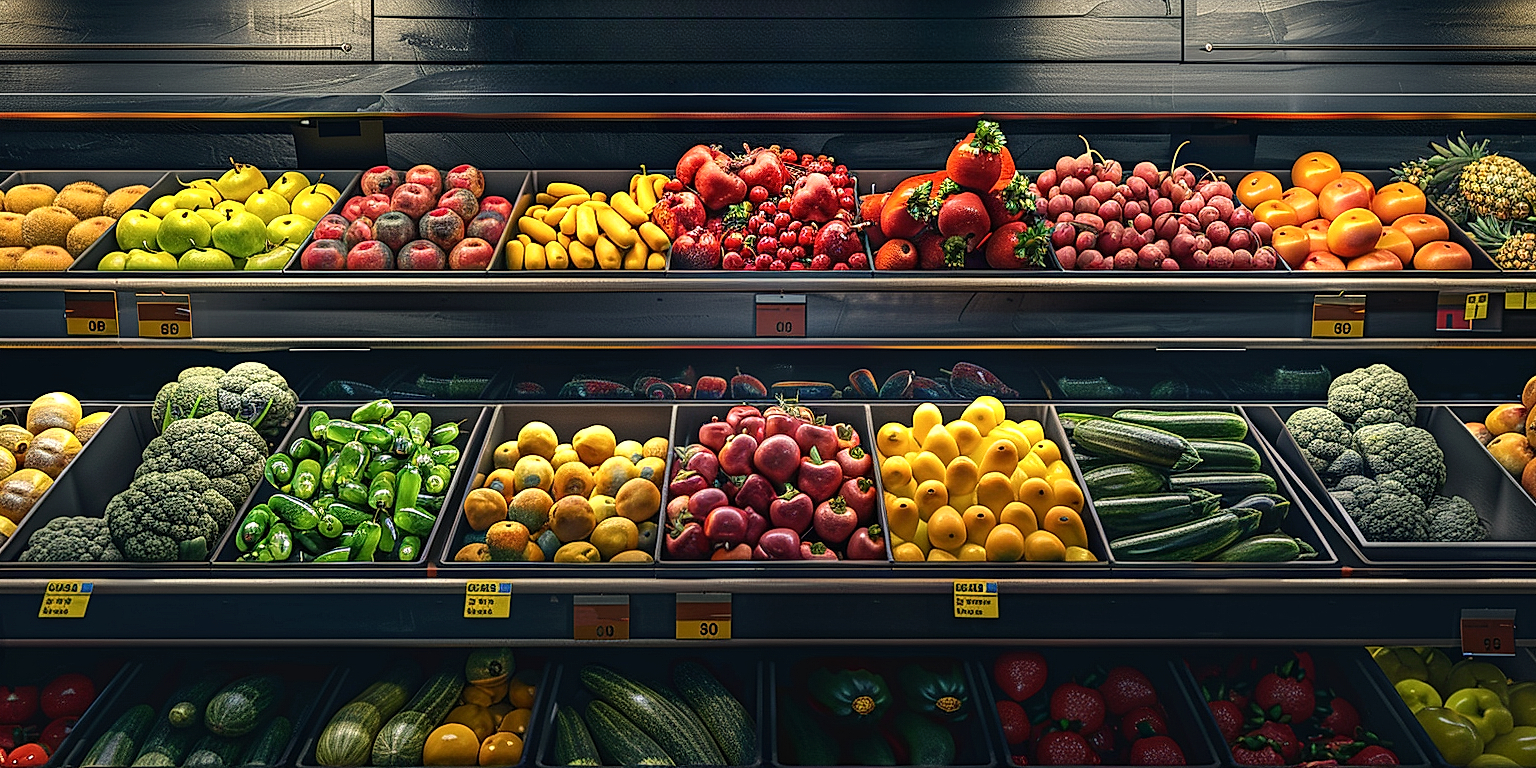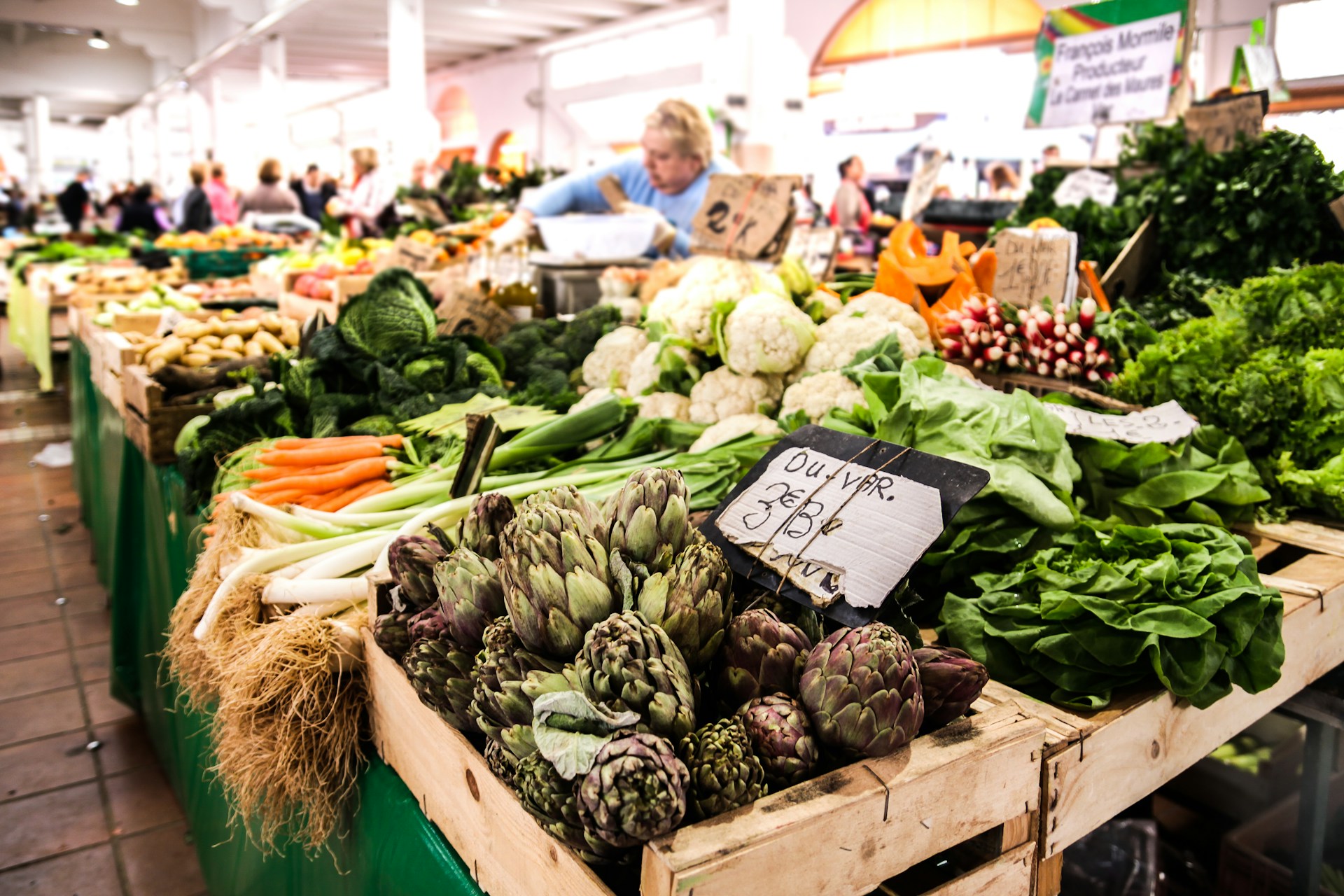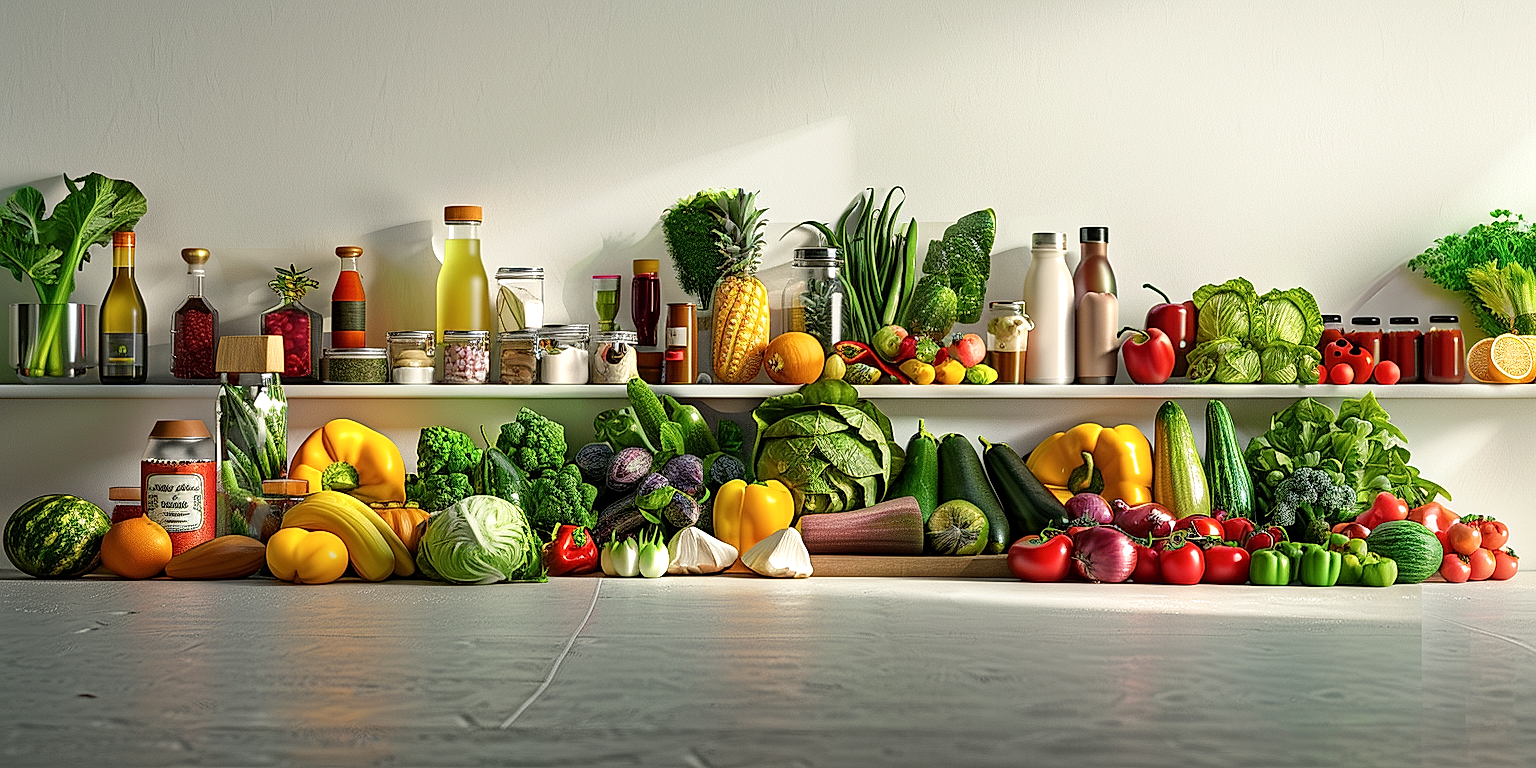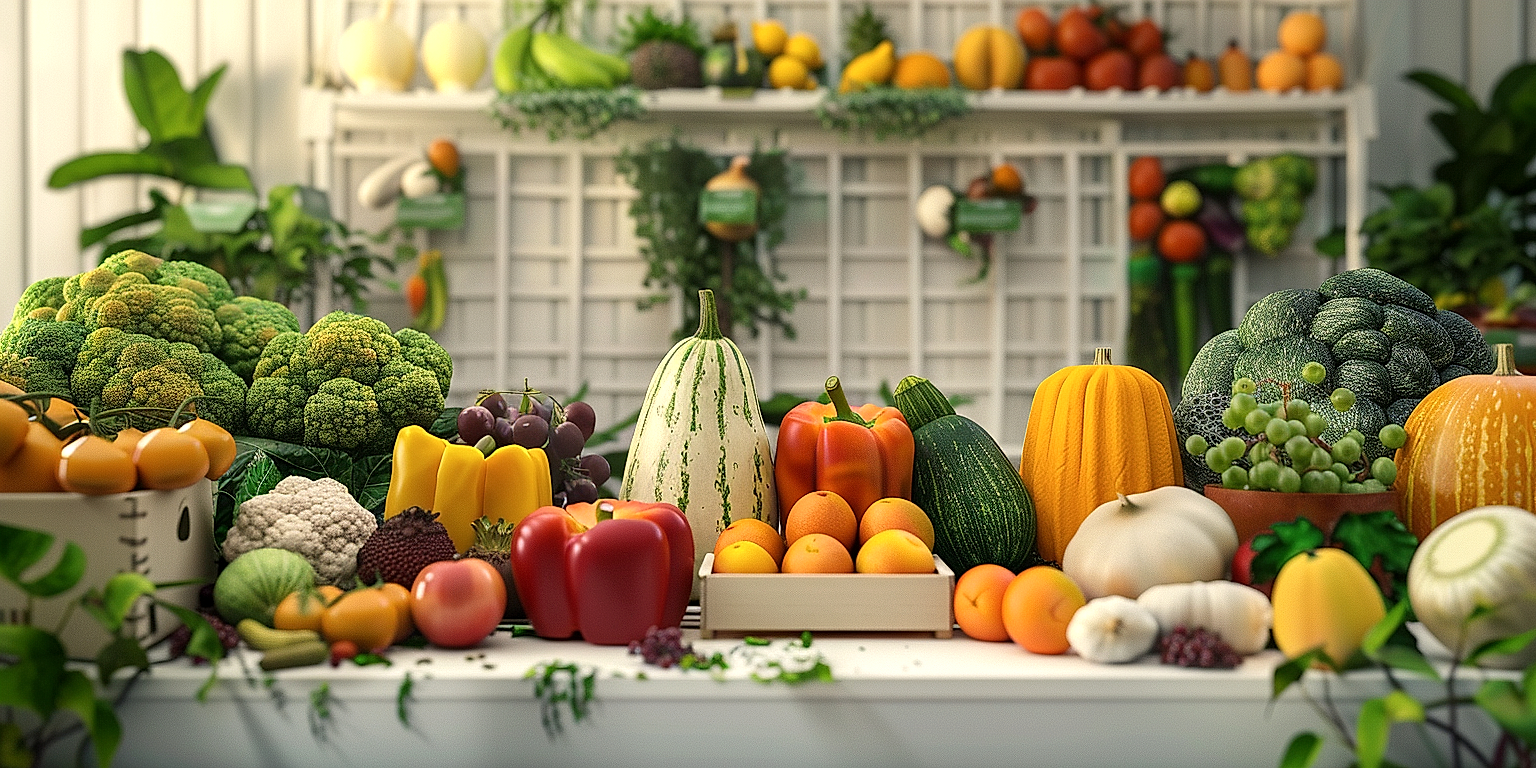In the highly competitive world of retail, the battle for consumer attention is intense.
The produce section, often the first stop for customers entering a grocery store, needs to be especially captivating.
Achieving an increase in produce sales is not just about having quality stock; it is also about how you present it.
The planning and implementation of strategic merchandising techniques can certainly play a pivotal role in this regard.
Businesses, both large and small, can reap substantial benefits by understanding and applying these methods efficiently.
Let’s delve into specific techniques that can have a considerable impact on your bottom line.
Contents
Merchandising Techniques That Boost Produce Sales
1. Strategic placement of fruits and vegetables
The strategic placement of fruits and vegetables in a grocery or produce store is one of the most effective merchandising techniques for boosting sales.
Positioning high-demand or seasonal items at eye level can greatly increase their visibility and consequently, their sales.
Also, placing fresh produce near the front of the store can instantly catch the attention of customers as they walk in.
Knowing that the produce is fresh and readily available can induce a sense of urgency in customers, effectively driving them to make immediate purchases.
This can be an effective way to move large quantities of produce and reduce spoilage rates, improving overall profitability.
Research has shown that strategic placement of goods can significantly increase sales, especially for impulse purchases.
On the other hand, placing items that are typically recipe components next to each other can encourage customers to buy all the necessary ingredients in one place.
For example, putting tomatoes, lettuce, and burger buns in proximity can influence a customer who initially intended to buy only one of the items to buy all three.
This technique of strategic grouping is called cross-merchandising and can significantly increase per-customer sales.
However, it’s also crucial to keep in mind the role that temperature and humidity play in the placement of fruits and vegetables.
Produce that requires refrigeration needs to be strategically placed in chilled sections, while other fruits and vegetables that thrive in warmer, dryer conditions should be placed in appropriately conditioned environments.
Similarly, produce that can be damaged by direct light should be placed in shaded areas.
In addition, setting up appealing and thematic displays at the end of aisles can capitalize on the power of impulse buying.
These displays not only visibly highlight the products but can also be used to promote sales and discounts.
Maintaining a neat, clean, and orderly arrangement of products can also influence purchase decisions, as customers might associate this with the quality and freshness of the produce.
Furthermore, making sure that expensive or premium products are at eye level can also lead to an increase in perceived value and consequently, higher purchases.
Ultimately, the strategic placement of fruits and vegetables can play an important role in enhancing customer experience and boosting overall sales.
2. Offering Seasonal Produce at Discounted Rates
The practice of offering seasonal produce at discounted rates is an effective merchandising technique that grocery stores can employ to boost their produce sales.
Here, the key idea is to capitalize on the availability and abundance of certain fruits and vegetables during a particular time of the year, subsequently offering them to customers at attractive rates.
TThis approach not only encourages seasonal eating but also gives consumers a reason to purchase in larger quantities, leading to increased sales.
According to a survey, people are more likely to buy fruits and vegetables that are in season and available at a reduced price.
In addition, seasonally priced produce introduces an element of variety and natural rotation in the stock, thereby keeping the offering fresh and attractive.
A creative idea can be to have a dedicated section in the store for ‘seasonal specials’ where all the discounted fruits and vegetables are displayed together.
This could be additionally promoted through store banners, digital displays, or weekly newsletters, hence drawing more attention towards these discounted seasonal produce.
Another possibility is to integrate this seasonal produce strategy with recipe recommendations or cooking tips, providing customers with added value and inspiration for using these products.
Oftentimes, consumers might stay away from purchasing certain seasonal produce simply because they are not sure how to cook them or incorporate them into their meals.
Sharing investing recipes or serving suggestions can help overcome this barrier and incentivize the purchase.
For instance, if asparagus is on discount due to its peak production in spring, a simple recipe for a creamy asparagus soup might be all it takes to convince a customer to add asparagus to their shopping cart.
Moreover, store owners should not discount the potential of tie-up promotions.
For instance, pairing seasonal fruits with yogurt, or a certain vegetable with complementary spices or sauces, can prompt consumers to buy more than they initially intended.
Done right, offering seasonal produce at discounted rates can not only increase sales, but also enhance customer satisfaction and loyalty, as shoppers tend to appreciate the effort made by stores to provide them with quality products at affordable prices.
3. Frequent replenishment to maintain freshness
One of the most crucial techniques for boosting produce sales in stores entails the frequent replenishment of fruits and vegetables to maintain freshness.
Customers are naturally drawn to produce that looks and feels fresh, therefore, it is essential to keep stock levels high and rotate items regularly.
It is not just about aesthetics, though, as a well-stocked produce aisle indicates not only freshness, but also the availability of healthy and appetising options.
Products that are old or approaching their expiration dates will likely discourage customers from purchasing.
Therefore, it’s necessary to consistently refresh the produce, replacing any wrinkled, overripe, or spoiled fruits and vegetables promptly.
While consistent replenishment does require additional labor and resources, the investment can significantly pay off in terms of sales and customer satisfaction.
However, frequent replenishment is not just about replacing old stock with new, but also about ensuring that the new stock is of the highest possible quality.
This approach sends a clear message to customers that the store values freshness and quality over everything else.
Quality control is another critical aspect of restocking, as it’s vital to remove any unwanted items in good time, but also to ensure the new stock meets the established quality standards.
Paying attention to peak shopping times and scheduling replenishments accordingly can further optimize freshness and appeal.
It is advisable to replenish produce before the store opens and consider additional restock times during peak business hours when a majority of customers may be browsing the produce area.
To this end, accurate inventory management and forecasting tools can play a significant role in ensuring the right amount of fresh produce is always on the shelves, eliminating the risk of overstocking and minimizing waste.
Implementing this technique requires not only careful planning and efficiency, but also strong lines of communication and coordination among store staff, management, and suppliers.
Finally, all of the employees should be trained on the importance of freshness and how to properly handle and restock produce to maintain its quality and appeal.
While it may seem like a simple strategy, these details, when taken together, can make a noticeable impact on the overall customer shopping experience and, ultimately, produce sales.
4. Creating visually appealing produce displays
The importance of visually appealing displays in boosting the sale of produce cannot be overstated.
Attractiveness plays a crucial role in pulling customers towards the produce section and making them want to buy.
Eye-catching displays are not only able to provide information but also create positive shopping experiences for customers.
Effective visual merchandising subconsciously influences purchasing decisions, making consumers buy more than they had initially planned.
An eye-catching display of fruits and vegetables is one that is neat, organised and displays the colourful variation of the produce.
This strategy revamps the look of the store and enhances the shopping experience, making the environment more engaging and enjoyable for shoppers.
Creating neat piles of fruits and neatly arranged vegetables is a visual spectacle inviting the customer to partake of the freshness.
With careful creation and positioning, visual displays can greatly increase the visibility of produce.
They can also make it more attractive to customers, thereby driving impulse purchases and boosting sales revenue.
The use of visual cues like signage and chalkboard displays also contribute to creating an appealing display that captures customer attention.
As a result, customers spend more time in the produce section, increasing the likelihood of making a purchase.
Produce grouped by colours and types not only looks appealing, but also helps shoppers find what they’re looking for easily, improving the overall shopping experience.
Visual merchandising that makes the produce aisle look bountiful, aligns with consumers’ perception of a thriving, fresh marketplace which increases the perceived value of the produce and ultimately leads to increased sales.
Visual merchandising is not just about aesthetics but it’s also about creating effective retail spaces which drive sales and promote a positive brand image.
Therefore, investing in eye-catching, visually appealing displays of fruits and vegetables serves not only to attract customers, but also to increase sales and improve the overall store’s profitability.
5. Providing samples for taste-testing
Providing samples for taste-testing is a well-proven technique in retail methodology that can significantly boost produce sales.
This practice allows customers to experience the product firsthand, instilling confidence about product quality and taste, and prompting impulse purchases.
Shoppers are often hesitant to try new fruits or vegetables due to uncertainty about the taste, texture, or usability.
Even regular produce items, like tomatoes or apples, can vary in taste from one batch to another due to seasonal or geographic differences.
Offering samples eliminates this hesitation and allows customers to appreciate the freshness and quality of the produce, compelling them to add the sampled items to their shopping carts.
An added advantage of providing samples is that it creates an interactive shopping experience and fosters a more personal relationship between your store and the shoppers.
It gives the shoppers a chance to discuss the produce and ask questions.
These interactions provide excellent opportunities for store associates to explain the origins, flavors, benefits, and potential uses of unfamiliar items, which can lead to more sales.
Moreover, taste-testing doesn’t only have to be for new or exotic fruits and vegetables.
When produce is in season and at their peak freshness and flavor, sampling sessions can help promote these items making customers aware of the difference in taste and quality.
Conducting live cooking demos or preparing dishes using the produce as key ingredients in the store can offer taste-testing and showcase a way to use the produce effectively, encouraging purchases.
Additionally, providing a mini-recipe booklet along with the samples can inspire shoppers to try new recipes, ultimately buying more of the sampled produce.
However, health and safety protocols must be observed closely while conducting samplings.
Proper handling, hygiene measures, packaging, and display are essential to ensure that the sampling experience is safe and enjoyable for the customers.
By strategically incorporating taste-testing into the retail merchandising strategy, grocery stores and produce markets can engage customers more actively, boost customer satisfaction, and increase produce sales.
The Bottom Line
Broadly speaking, the placement and presentation of fruits and vegetables in a store play a significant role in driving sales.
Offering seasonal produce at discount rates helps increase the affordability and attractiveness of healthier food options.
In tandem with this, frequent restocking is also crucial to ensure that consumers have access to fresh produce, which contributes positively to their shopping experience.
The use of appealing displays significantly contributes to enhancing the visual appeal of the store and drawing customer attention.
Additionally, providing product samples for taste-testing bridges the gap between consumer hesitation and purchase decision, thereby boosting sales.
Overall, these strategies can greatly improve the customer’s shopping experience while also increasing the store’s profitability.




